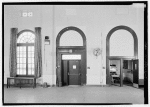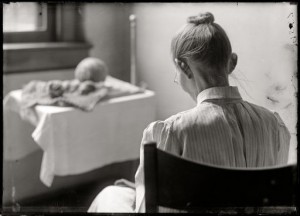When doctors first began removing patients to asylums, they felt that visits home would be unproductive. They even felt that visits to the asylum by family might not be a good idea, since they could agitate or upset the patient. Sometimes visitors insisted on coming, so asylums usually did have parlors or reception rooms for family visits.
Doctors eventually came to think that visits home might be all right in promising cases, and began to allow what they called furloughs. Patients could go home for 30 days or longer.
Since doctors believed that much of insane behavior was a matter of self-control, they thought furloughs could work in two ways. Either the patient had learned self-control at the institution and could maintain it at home, or the thought of going back to the asylum would be a sufficient motivation for the patient to exercise self-control.
Even though some patients had to return to the asylum, doctors were willing to give them additional chances to go home. That change in attitude undoubtedly meant a lot to patients who were aware of their surroundings and truly trying to get well.
________________________________________________________

